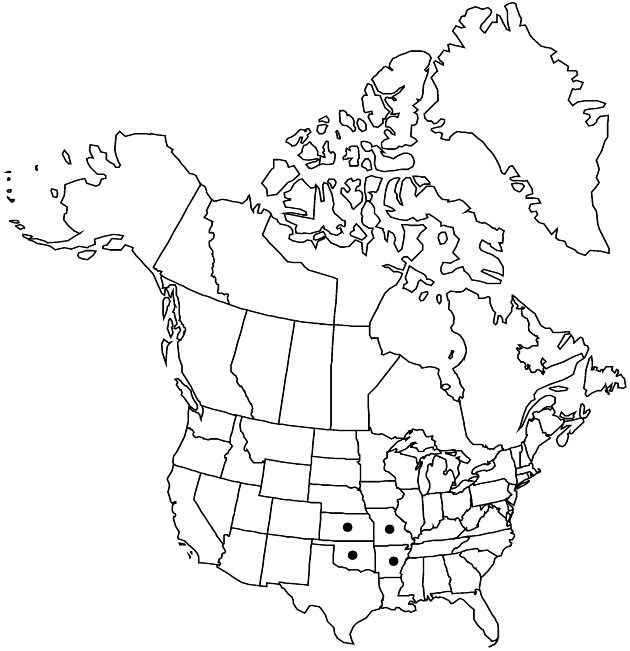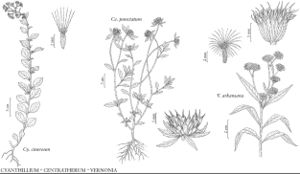Difference between revisions of "Vernonia arkansana"
in A. P. de Candolle and A. L. P. P. de Candolle, Prodr. 7: 264. 1838.
FNA>Volume Importer |
FNA>Volume Importer |
(No difference)
| |
Revision as of 18:36, 24 September 2019
Plants 8–12(–20) dm. Stems scabrellous to pilosulous, glabrescent. Leaves mostly cauline; blades lance-linear, 6–14(–20) cm × 7–15(–25) mm, l/w = 7–10(–18), abaxially scabrellous (hairs awl-shaped), resin-gland-dotted, adaxially scaberulous, glabrescent, resin-gland-dotted. Heads in ± corymbiform arrays. Peduncles 2–5 cm. Involucres ± hemispheric, 11–15 × 11–15 mm. Phyllaries (50–)60–70+ in 5–6 series, scabrellous (and resin-gland-dotted), margins ciliolate, the outer lance-ovate, 3–8+ mm, inner lanceolate, 12–15 mm, tips subulate to filiform. Florets 50–100+. Cypselae 3–5 mm; pappi fuscous to purplish, outer scales 25–30+, 0.5–1 mm, contrasting with 25–30+, 5–7 mm inner bristles. 2n = 34.
Phenology: Flowering Aug–Oct.
Habitat: Leas, roadsides, stream banks, in sand or on limestone
Elevation: 200–300 m
Distribution

Ark., Kans., Mo., Okla.
Discussion
Vernonia arkansana was published in April, V. crinita in October 1838.
Selected References
None.
